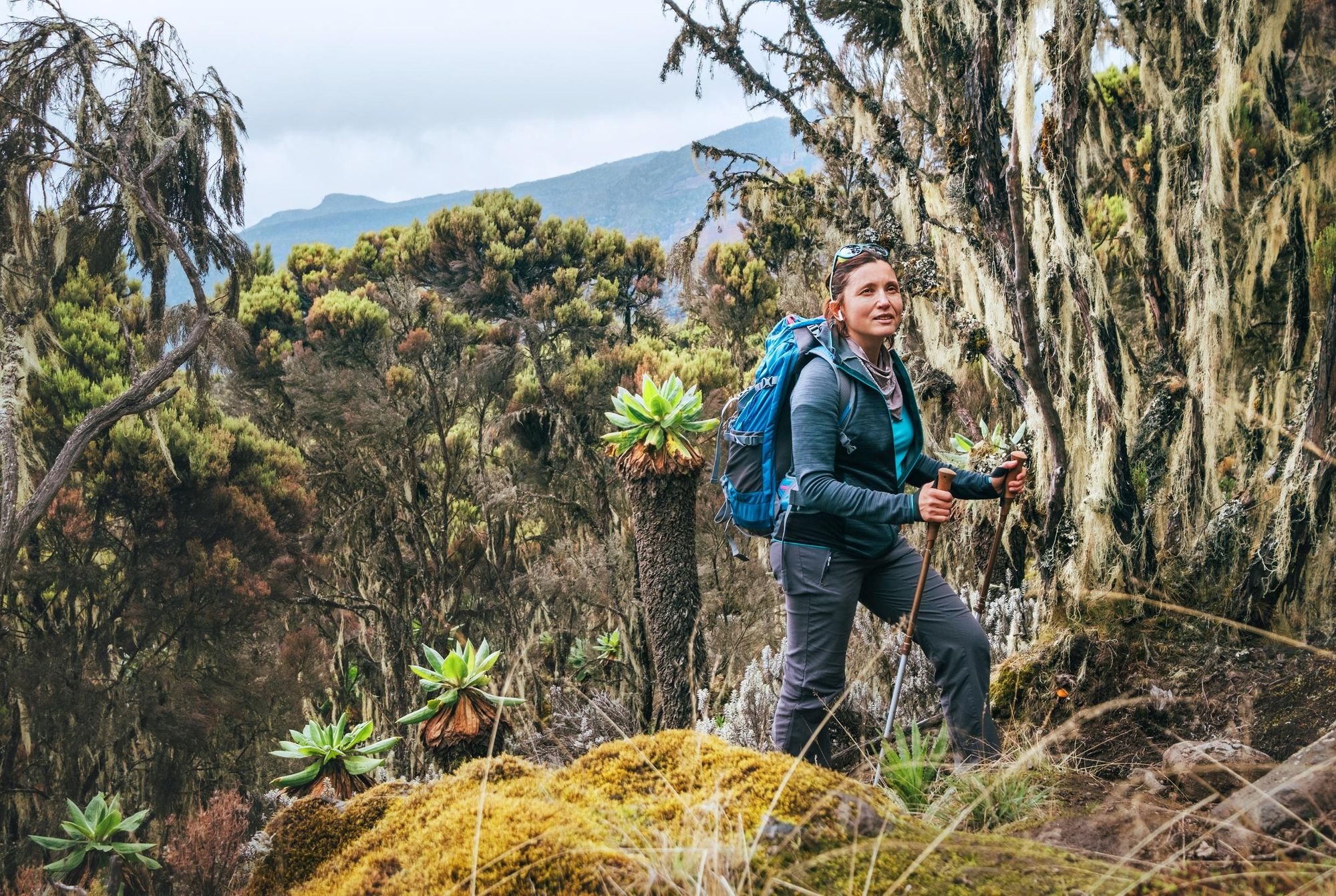To list the best hikes in Africa is no easy task. This is a continent famed for its big landscapes and big skies; for great lakes, vibrant wildlife and remarkable sunsets.
Africa is also home to remarkable mountains ranges, though, from Kilimanjaro and Mount Kenya to the Rwenzori Mountains of Uganda and Mahale Mountains of Tanzania, where chimpanzees jump from tree to tree, co-existing with lions. There are rocky summits, montane forests and jungles to explore - not just stunning savannah - and that's before you even get to the six island nations off the coast of the continent, which offer a wealth of hiking adventure.
To narrow 54 counties down into a list of hikes is an impossible task; but what we have aimed to do here is provide an introduction to some of the best national parks, mountain ranges and hiking regions across Africa and on the islands.
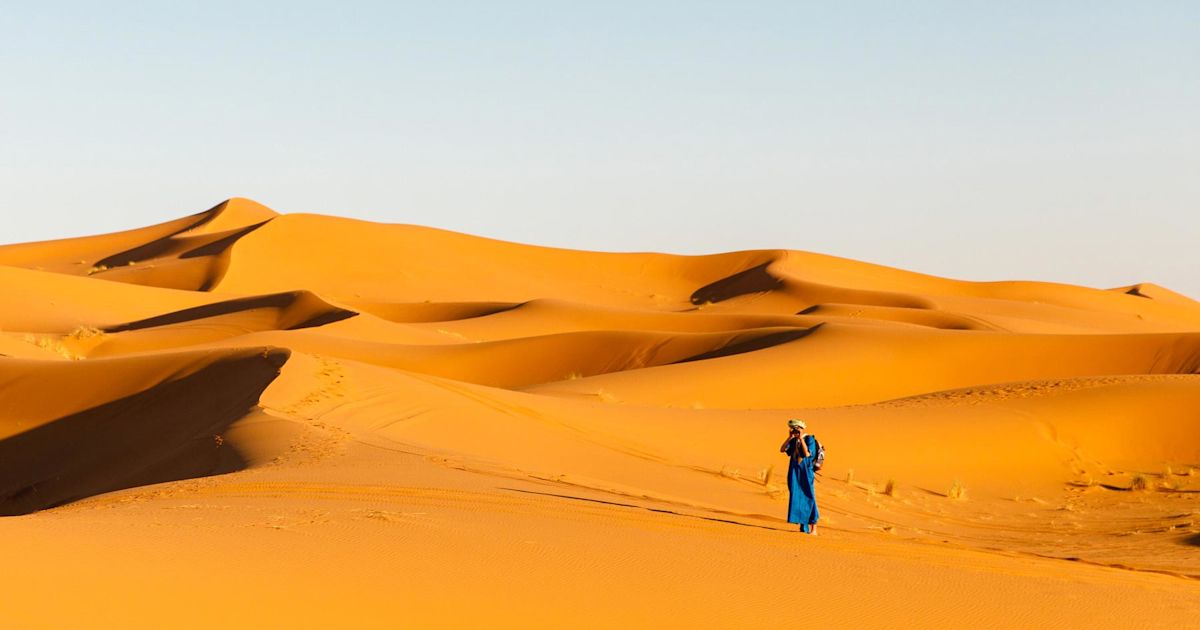
A guide is essential for almost all of these walks, owing to the challenging and remote nature of most of them. For some of the hikes, government-appointed armed guards are actually required, and in certain cases, you may be required to book ahead. Look into specific requirements before arriving at each hike site.
It’s important to note that these route descriptions are only short summaries, designed to inspire but not to serve any navigational purpose. They are not intended to guide you on the route and further mapping and planning (or a local guide!) will be required if you want to safely walk any of the trails featured.
20 of the Best Hikes in Africa, Mapped
This map shows the general area of all of the best hikes in Africa listed in this article. The walks are spread out widely across the continent and on the islands.
1. Climb Mount Kilimanjaro (5,895m) via the Machame Route
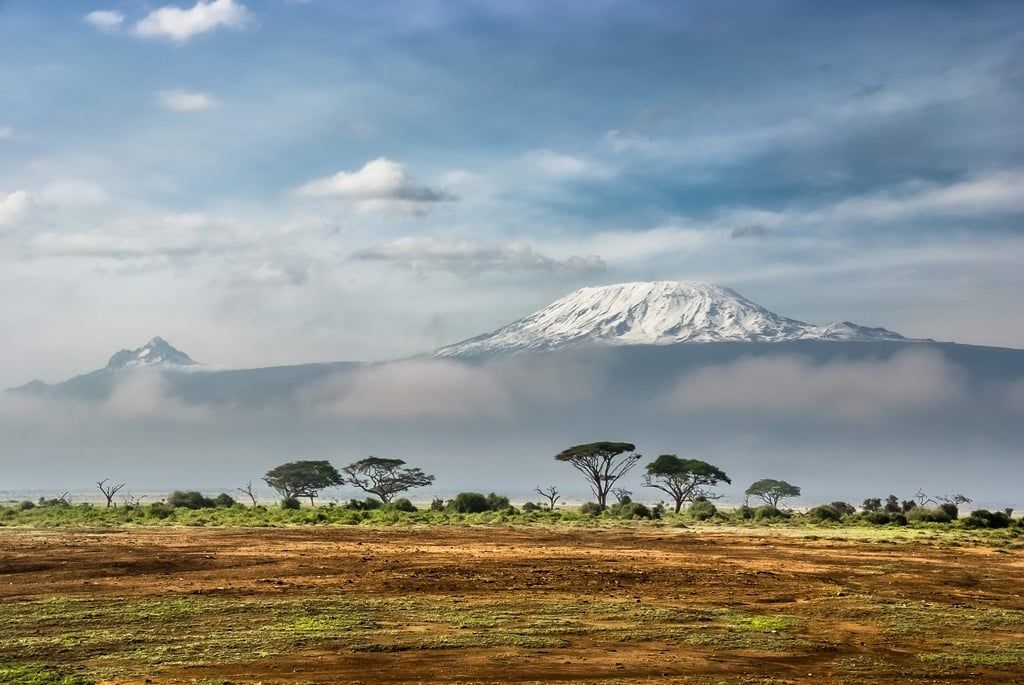
- Perfect for: The ultimate African adventure
- Country: Tanzania
- Level: Challenging
- Duration: 7+ days
There can be no list of the best hikes in Africa without mention of Mount Kilimanjaro, which at 5,895m is the highest mountain in Africa and one of the world’s great seven summits.
There are numerous ways to get up Kilimanjaro - with acclimatisation time en route crucial for safety. The Machame Route is known as the "Whiskey Route", simply because it’s a harder trek than the most common route up the mountain, the Marangu Trail, which is also known as the “Coca-Cola route”.

You’ll start this trek in the rainforest zone, at the Machame Gate, south of Kili. This is a camping route - meaning there are no huts to sleep in along the way. As a result, it’s also a lot more peaceful than the Marangu Trail, with fewer other trekkers around. You’ll enjoy views of the Shira volcanic cone and tackle some steep, undulating segments of trail. The route takes you around the Lava Tower and over the Barranco Wall, then onto the summit base of Barafu. On summit day, you’ll likely start hiking before midnight - earning one of the most beautiful sunrises you’ve ever seen as you pass Gilman’s Point, Stella Point and move onto Uhuru Peak. You’ll then descend on a different route to Mweka Camp in the rainforest zone.
If you’re curious about other routes up Kilimanjaro, we’d recommend looking at the Rongai route - an interesting walk which approaches Kilimanjaro from the north - or the Lemosho Route, which is perhaps the most scenic path to the summit, coming at Kilimanjaro from the remote west. Add on a safari afterwards, and you’re looking at one of the ultimate African experiences.
Read more: The Beginner's Guide to Climbing Mount Kilimanjaro
2. A desert hike to Egypt’s Sinai Desert
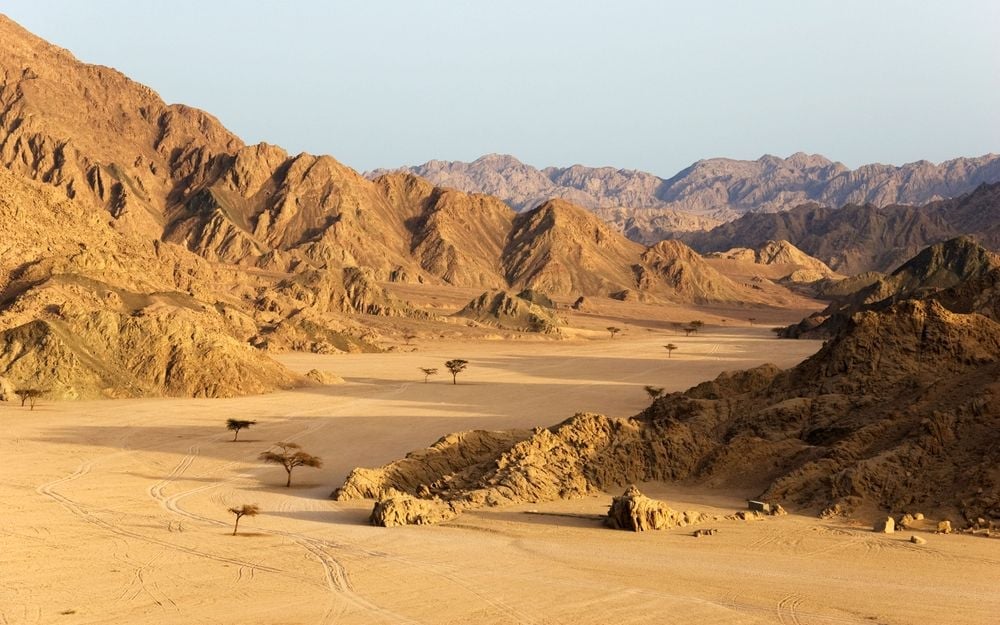
- Perfect for: Combining desert and colourful coral reefs
- Country: Egypt
- Level: Challenging
- Duration: 3-6 days
The Sinai Peninsula is the huge chunk of land which sits between the Mediterranean Sea to the north and the Red Sea to the south - with Cairo to the west and Israel and Jordan to the east.
The Sinai Desert is the arid expanse situated within this peninsula - a moonscape of sand, gravel and mountains. It’s world famous as the site of the biblical events in the book of Exodus, but today, it’s also a thriving spot of adventure tourism, where you can experience traditional nomadic life with the Bedouin guides, wild camping and trekking amongst the wild desert.
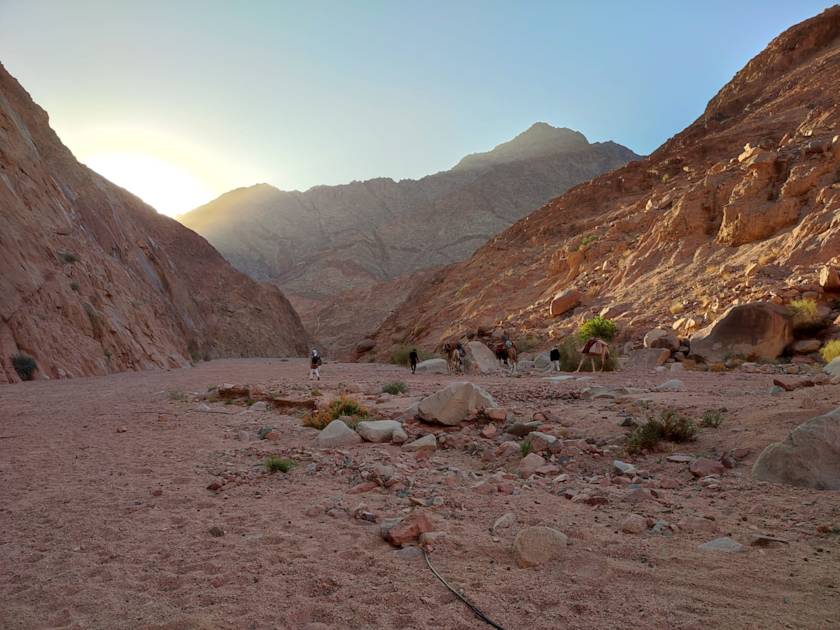
Within this vast environment, experienced indigenous guides can run various itineraries, allowing you to cook dinner on an open fire and sleep beneath only blankets under starry skies.
Perhaps the ultimate itinerary is one that takes you to Wadi Rimhan, tracking a steep ravine down to a valley where green palm trees interrupt the sand, and then on to summit Jebel Um Shomer, a 2,587m mountain, which you’ll have to scramble to reach. This is the second highest mountain in Egupt, and from the top you can look out over views from the Gulf of Suez to mainland Egypt and across the Red Sea. There’s plenty more to explore too - from Telah Braika gorge nearby to the fantastic traverse of the rocky Naqab El Ahemar (the red passage).
After your hike, you can combine this trip with some rock climbing in the area, or indeed, go snorkelling in the Red Sea, around colourful coral reefs like that at Ras Abu Galum.
Read more: How Bedouin Culture is Shaping Tourism in Egypt's Sinai Desert
3. Climb Mount Toubkal (4,167m) in Morocco
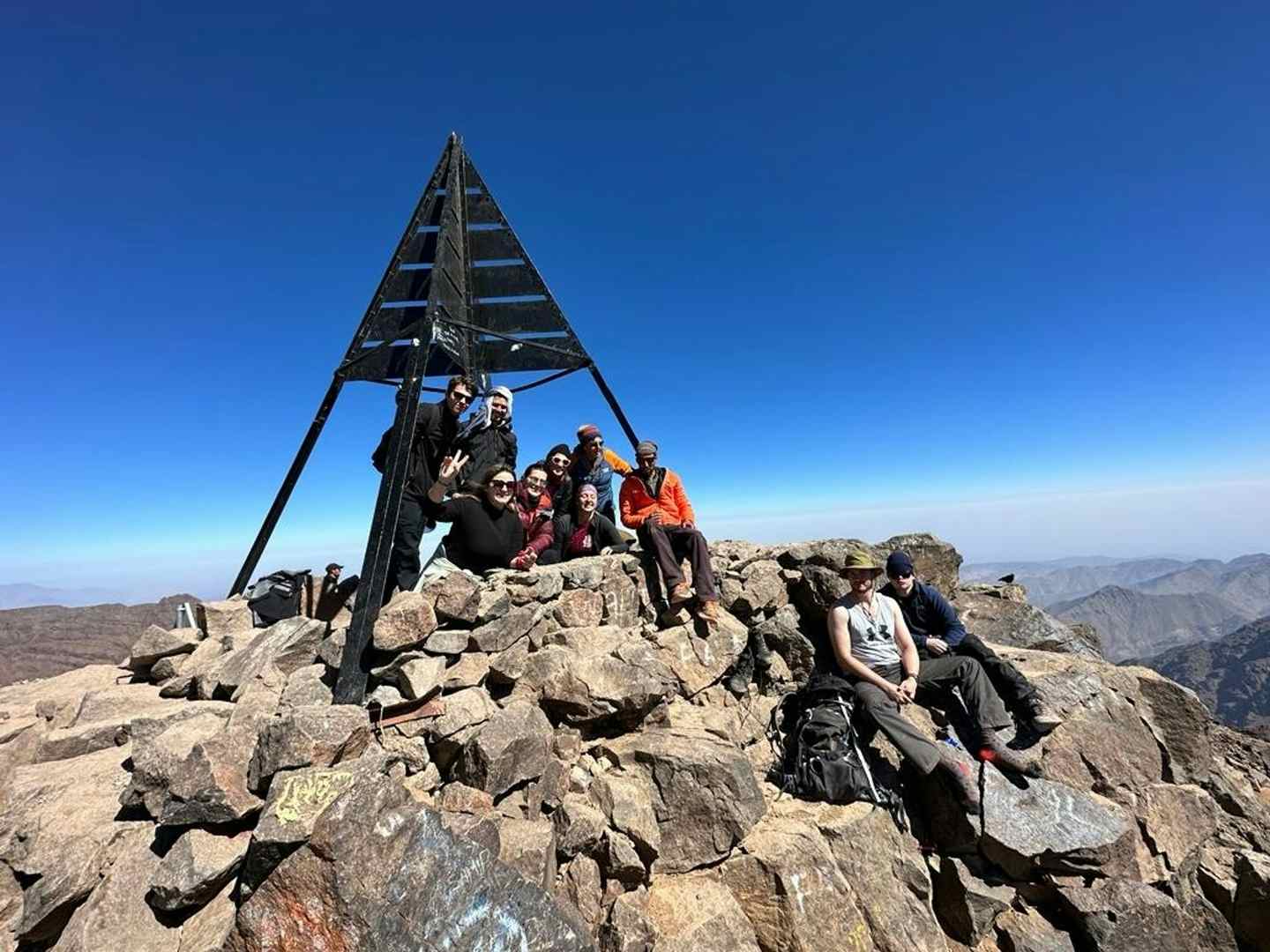
- Perfect for: Bagging a first 4,000m mountain
- Country: Morocco
- Level: Challenging
- Duration: 2 days
At 4,167m, Mount Toubkal is the highest peak in Morocco and the highest peak in North Africa. Sitting in the legendary Atlas Mountains, this non-technical summit is a two-day trek, with the first day taking you up to the Refuge du Toubkal, a mountain hut where you spend the night, and then a long second day taking you all the way up to the summit and then back down to Imlil.
It’s around a 90-minute drive from Marrakech to Imlil, a gateway town to the Atlas Mountains which sits at around 1,800m. From there, day one will have you hiking up through Berber villages, surrounded by snow-sprinkled mountains, and walking through high mountain valleys.

The altitude is real on this climb, and you may notice it as you follow the trails above 2500m - around the height where, depending on the time of year - there can be snow. You’ll come to the refuge at 3,207m soon after this, where there are dormitories, toilets, warm meals to be had and, as you’d expect, plenty of happier hikers to chat to.
Waking up while it's still dark, you'll head off to scramble and climb to the summit of Toubkal. If you’re quick enough and left at the right time, you can watch the sunrise over North Africa from the summit. Then it’s the long descent ahead, back down to Imlil.
Read more: A Guide to Climbing Mount Toubkal
4. Trek Pico do Fogo (2,829m) in Cape Verde
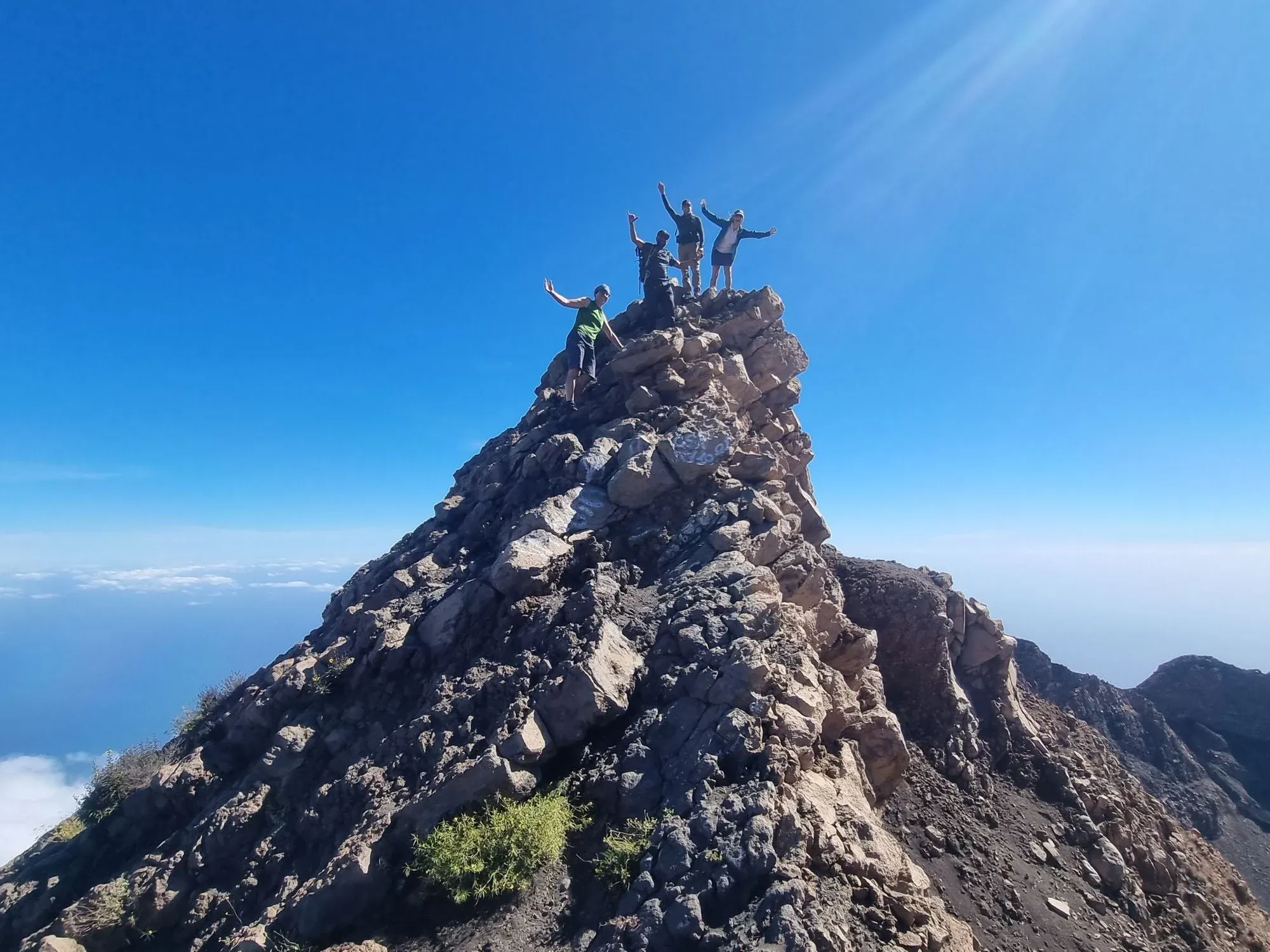
- Perfect for: Discovering island life
- Country: Cape Verde
- Level: Moderate
- Duration: 7 hours
The wonderful Pico do Fogo is the high point of the island of Cape Verde, an archipelago of 10 volcanic islands which sits 350 miles (570km) west of the African mainland in the Atlantic Ocean. Setting off at sunrise from your casa, you’ll be able to climb to the top of this mountain on a steady incline in roughly three-four hours. From the top, there are unblocked vistas out over the Atlantic Ocean, as well as to the neighbouring islands of Brava, Santiago and Maio.
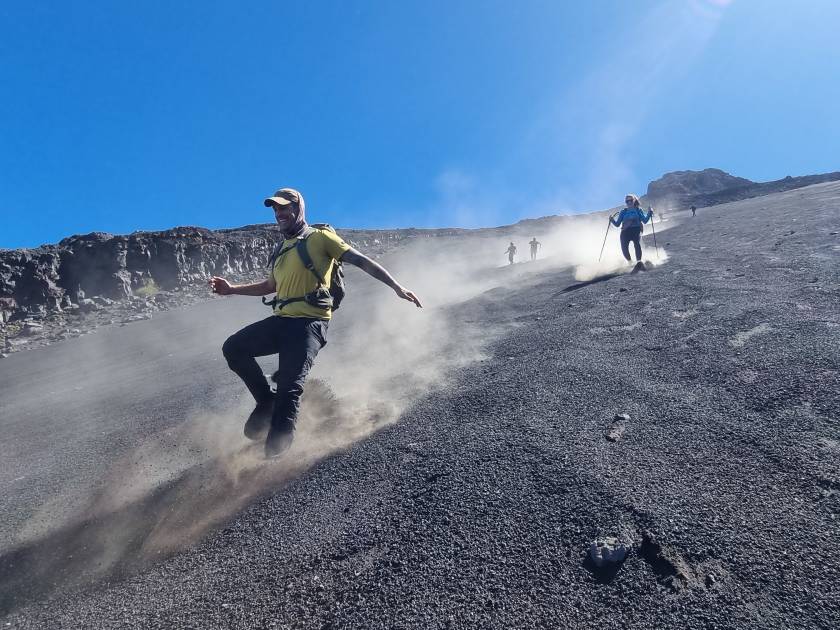
Have lunch on the mountain top before descending on the ash-covered slopes, taking your time to breathe in the views. You should be down in time to taste some local wines back in town.
Of course, if you’re travelling all that way, you’ll also be looking to add extra adventure to your Cape Verde trip. Look at hiking the Calabaceira Valley and Malagueta Natural Park, and off the trails, and go snorkelling and swimming in the waters around Tarrafal.
Read more: Exploring the Volcanic Soul of Cape Verde
5. Trek the Atlas Mountains in Morocco
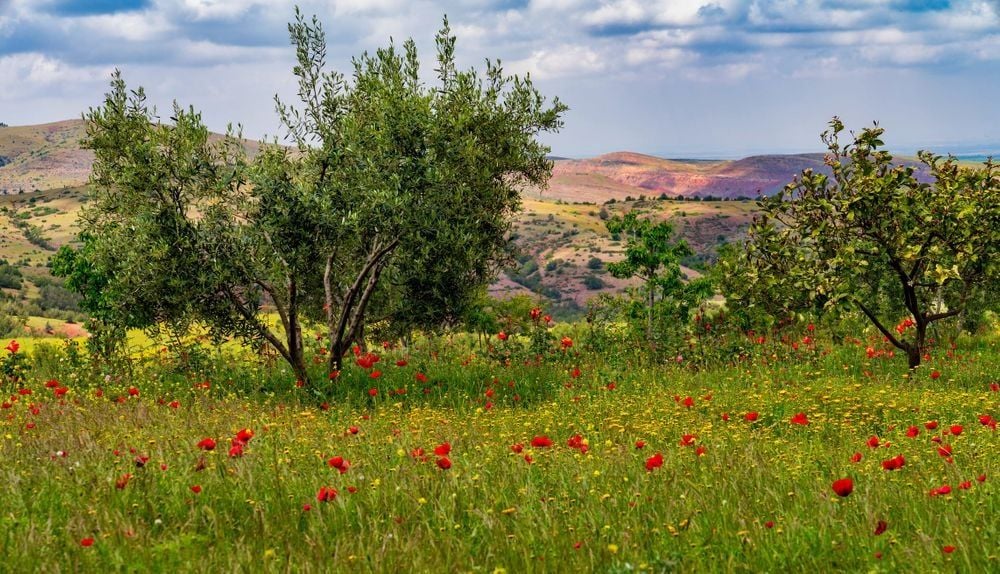
- Perfect for: A full Atlas adventure
- Country: Morocco
- Level: Moderate
- Duration: 4 day
If you don’t fancy the drama of a two-day climb up Mount Toubkal, then there’s still every reason to venture out to the Atlas Mountains - so much so that we’ve given it its own entry in this list.
Just because you don’t climb the mountains doesn’t mean that you can’t enjoy their beauty. On this trek, instead of heading to Imlil, you’d head to the trailhead at Imi Oughlad, just 15 minutes shy of Imlil. From here, you can hike along the Moroccan countryside, supported by mules, to reach the red clay village of Tiziane, allowing you to see the culture and delight in the food.
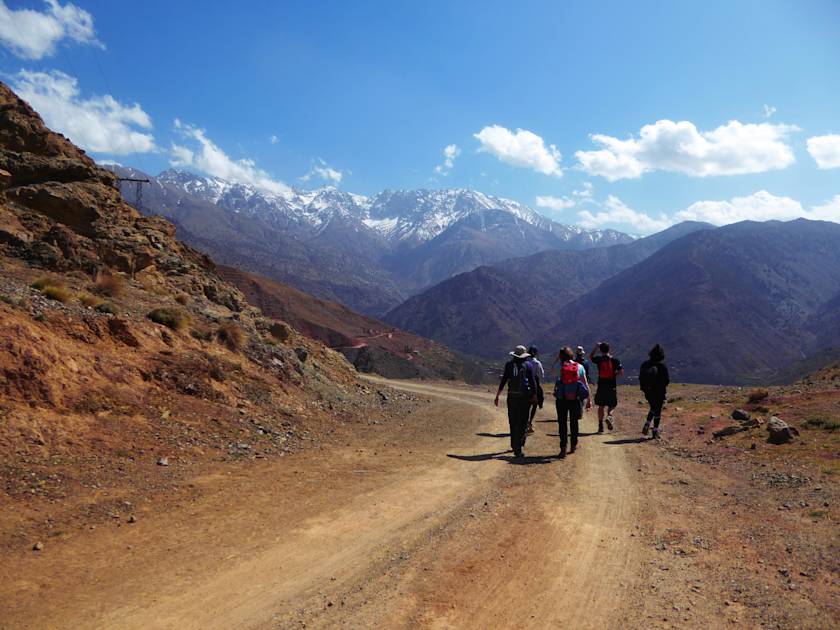
What surprises many people about this area is how green it can be, and hiking through the walnut and cherry groves to Assaka spring, you’ll see just that. Green groves line the orange horizon and layer into the distance, with the big Atlas Mountains behind. This sets the tone for your walk. Explore the Berber villages of D’knt, Agouns n Assol or Tamsoult, enjoy freshwater springs which shepherds flock to (no pun intended) and enjoy the 4,000m peaks on the horizon.
Read more: An Adventure Guide to the Atlas Mountains
6. Hike the Spitzkoppe mountains of Namibia
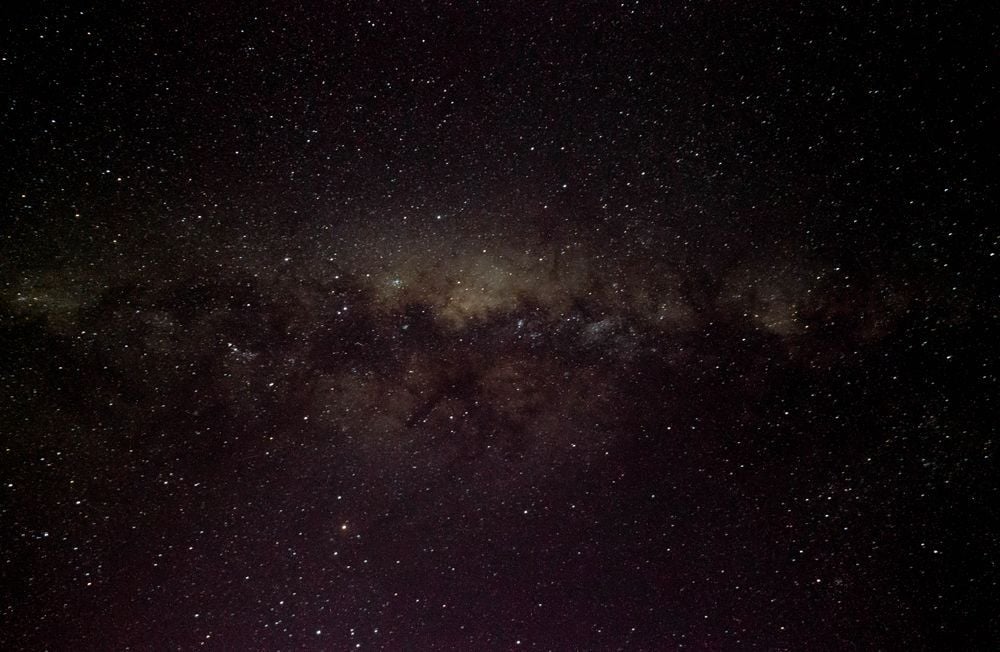
- Perfect for: Desert lovers
- Country: Namibia
- Level: Easy
- Duration: 2 day
Namibia is a land famed for stunning sand dunes which meet the Atlantic coast, but further inland you’ll also discover this country has remarkable mountains. The Spitzkoppe mountains are perhaps the most fascinating place in the Namib Desert - which at 55-80 million years old, is thought to be the oldest desert in the world. The mountains are a series of bald granite peaks between Usakos and Swakopmund, and they cut truly striking features within the desert.
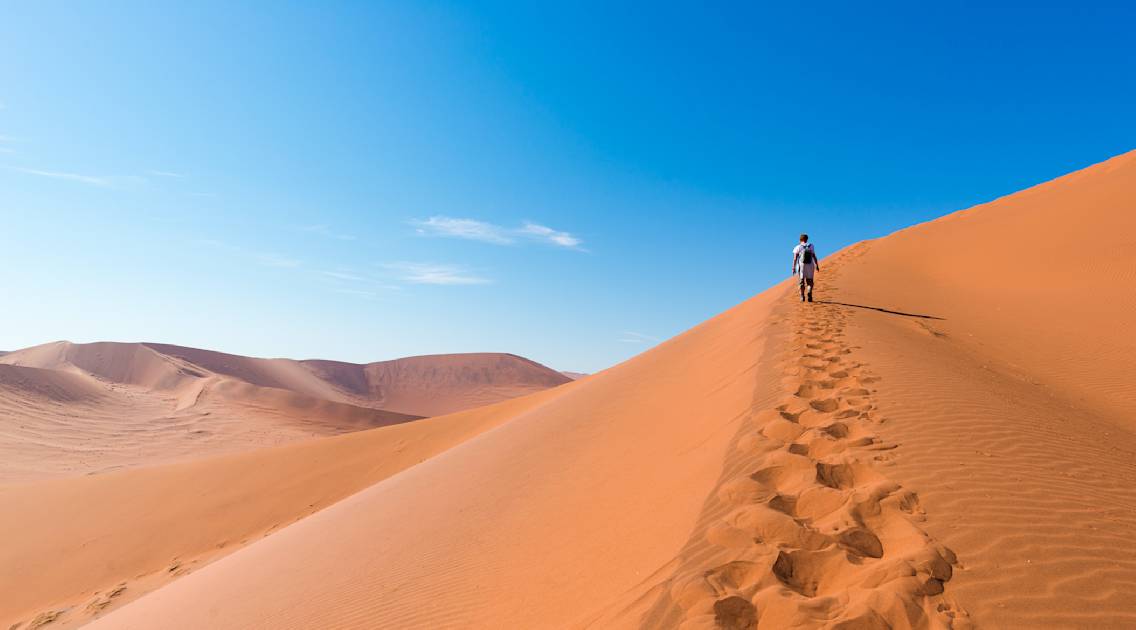
Set out to hike these massive natural pyramids - which reach up to 1,650m - and pass by the iconic stone arches which have drawn so many to the area. If you get the opportunity, this is a particularly wonderful spot to camp - with an experienced guide always able to keep you right.
Hike around Grosse Spitzkoppe, one of the highest peaks in the range, often referred to as the Matterhorn of Africa. Once you’re done in the area? Take a classic African safari through Etosha National Park, explore the capital of Windhoek and check out the beauty of the Skeleton Coast.
Read more: Hiking Among the Wonders of Namibia: A Photo Story
7. Hike Le Morne Brabant Mountain on Mauritius
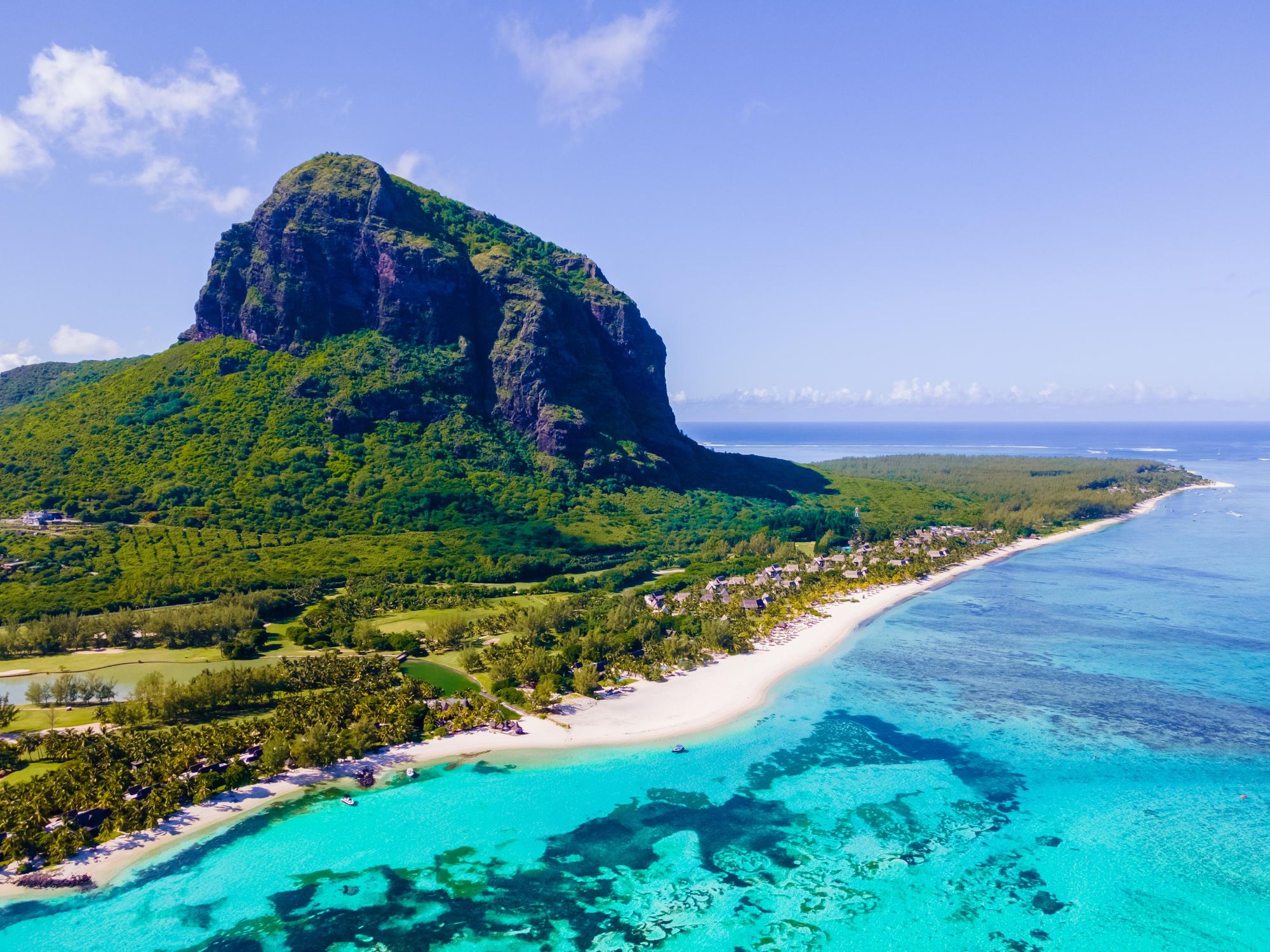
- Perfect for: A world-beating day hike
- Country: Mauritius
- Level: Moderate
- Duration: 3-4 hours
Le Morne Brabant is a peninsula at the southwestern tip of Mauritius, an island a huge 1,240 miles (2000km) off the east coast of Africa. The stand-out feature of the peninsula is Le Morne Brabant Mountain, a site so special it was added to the UNESCO World Heritage List in 2008.
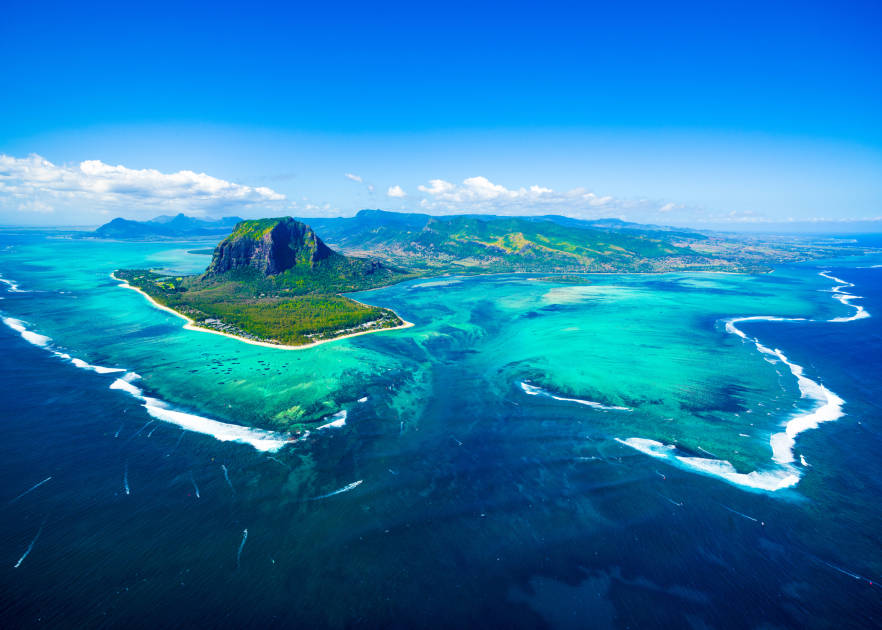
The mountain is steeped in history; previously serving as a refuge for escaped slaves on the island. The slopes of the mountain are steep and home to caves and underhangs, while the summit plateau is quite large. The area around the mountain is also rich in biodiversity, so it’s a good place to go if you want to spot the rare Trochetia boutoniana, the flower of Mauritius.
From the summit, you can look out to the lagoons of Mauritius and out to the ocean. If you’re looking for further hiking in Mauritus, check out the trails of Black River Gorges National Park.
8. Bush walk in Botswana’s Okavango Delta
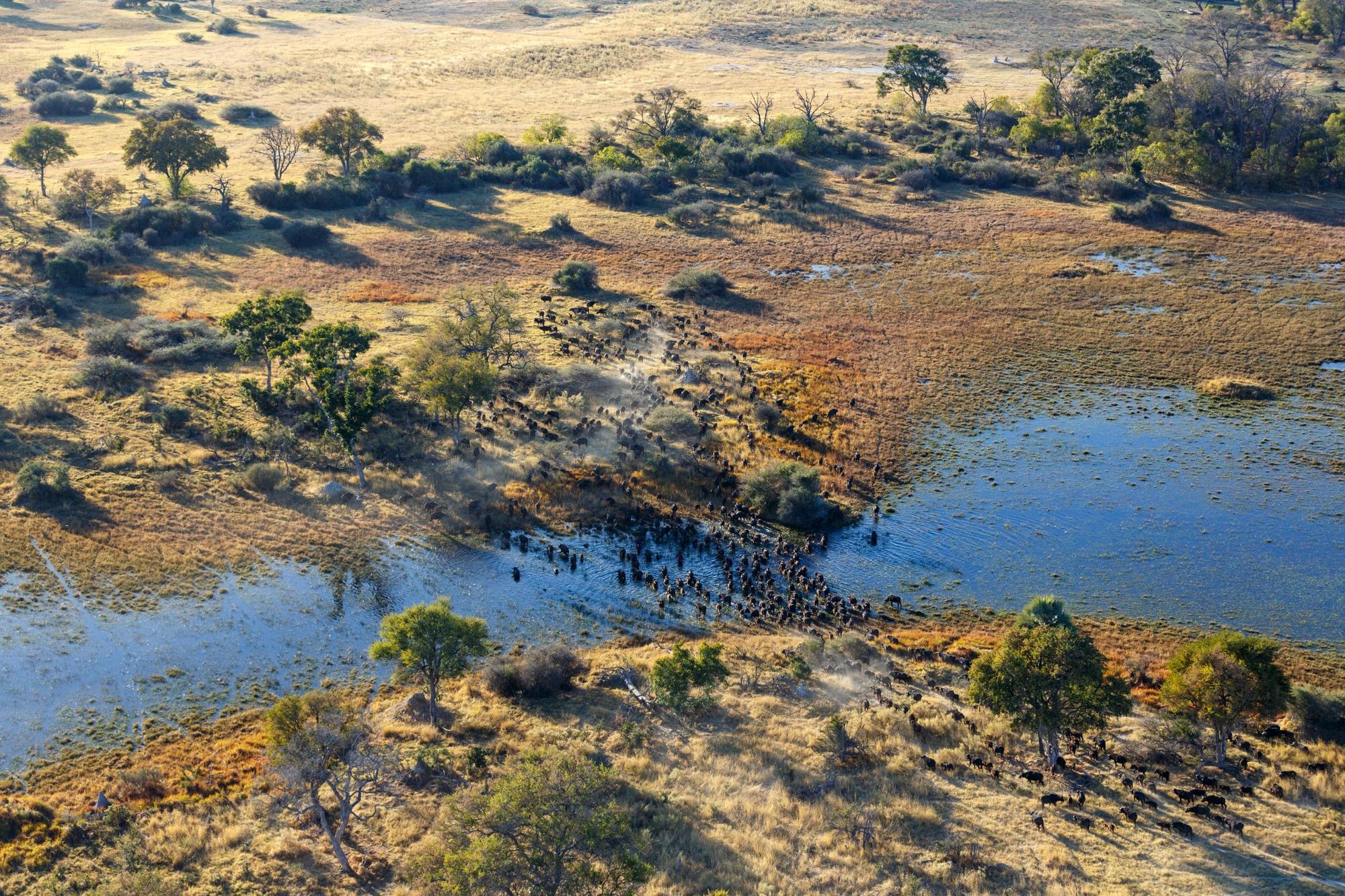
- Perfect for: Wildlife lovers
- Country: Botswana
- Level: Easy
- Duration: 3 days
The Okavango Delta in Botswana is a sprawling, 7,813 square mile (20,235km square) inland delta, renowned for the grasslands which flood seasonally and which provide the habitat for a sublime variety of wildlife - from African bush elephants and buffalo to hippos, leopards, lions, cheetahs, giraffes, rhinoceros, zebras and so, so much more. There’s nowhere quite like this.

Venture out to the African bush, and you can embark on some epic wildlife-watching destinations. These trips are enormously enriched by the expert local guides, who will point out animals, spot them and their tracks, and be able to tell you all about local life in the area.
Bush walks in the Maun and Planet Baobab can be done in the subsequent days, with good chances to spot African Wild Dogs, and then see that iconic tree of Africa. Make these bushwalks part of a wider adventure itinerary; canoeing and/or on safari, for the best trip.
Read more: Witnessing the Circle of Life in Wild Botswana
9. Hike the Drakensberg Grand Traverse in South Africa
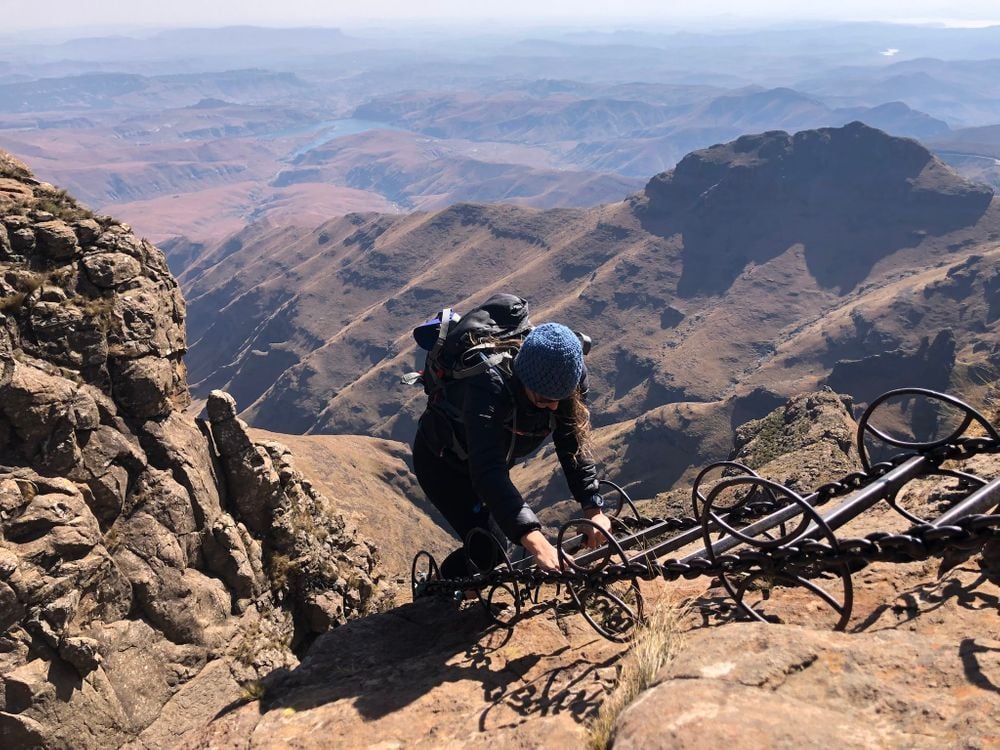
- Perfect for: A tough mountain epic
- Country: South Africa/Lesotho
- Level: Challenging
- Duration: 10-15 days
The legendary Drakensberg Grand Traverse snakes between the border of South Africa and Lesotho, and runs through the Drakensberg, eastern portion of the Great Escarpment which encloses the central South African plateau. The area is renowned for its beauty and variety. One day you could be hiking through lush green; the next scaling steep moonscape mountains.
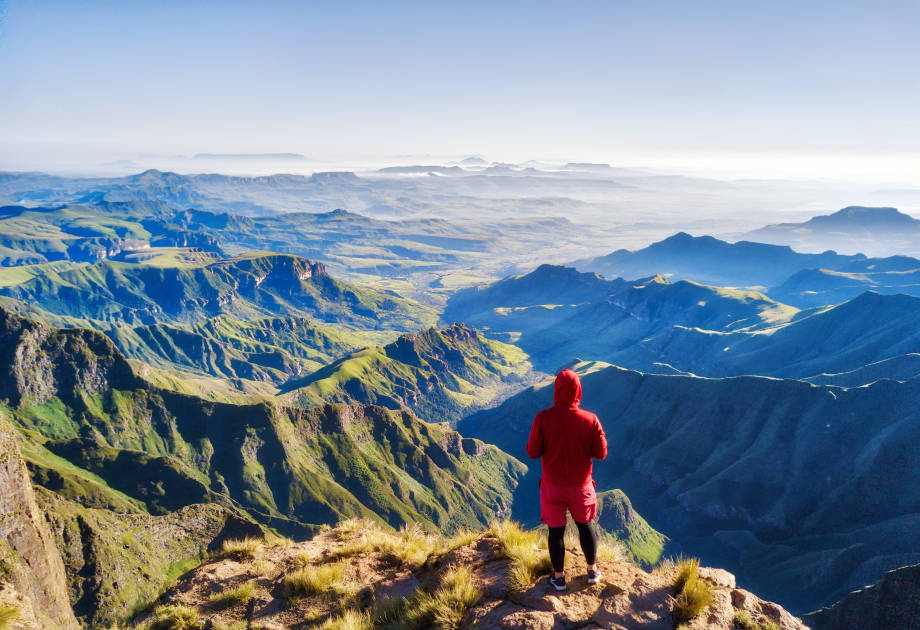
This epic trek, which runs around 140 miles or 230km, is often said to be one of the toughest in the world. Part of that is because you’re going to spend most of the hike above the 3,000m mark. Part of that is because it is entirely unmarked and there is not particularly a ‘beaten trail’ - meaning hikers need to be experts in navigation in order to complete the trek. Keeping all of that in mind, know that when this trail is described as non-technical, that doesn’t make it easy.
There are 34 ridgelines on this route, an array of remarkable waterfalls, and near constantly beautiful views. The route also takes you up the six highest peaks in the region, all of which are over 3,000m. The ups and downs of this mean that by the time you’ve finished the grand traverse, you’ll have done a higher elevation than if you’d climbed Everest from sea level.
Read more: 7 of the Best Things to Do in the Drakensberg Mountains
10. Climb Pico Papagaio on São Tomé and Príncipe
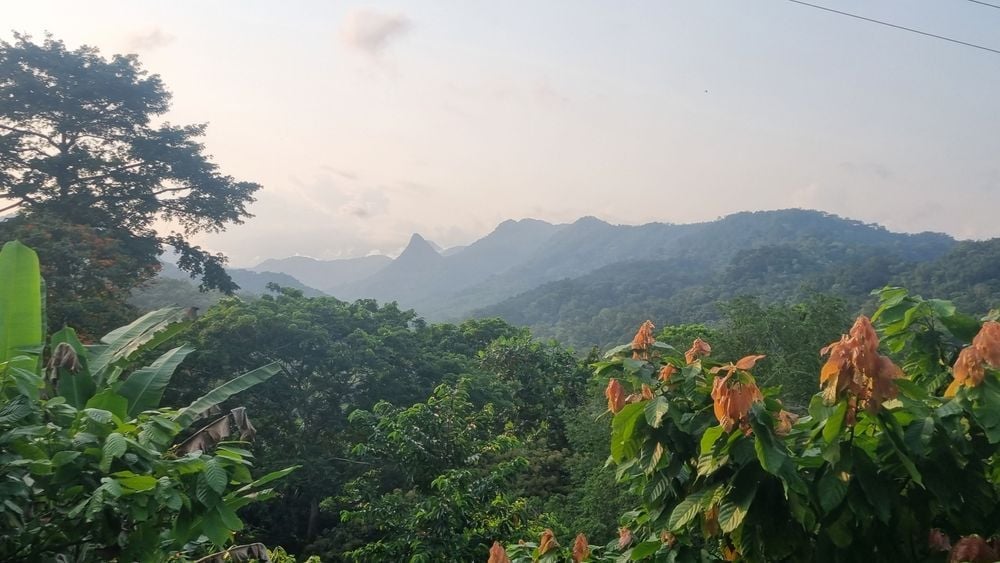
- Perfect for: The route less travelled
- Country: São Tomé and Príncipe
- Level: Challenging
- Duration: 5 hours
São Tomé and Príncipe is a beautiful couplet of islands off the west coast of Africa. It has beautiful beaches, virgin rainforest, remarkable endemic wildlife and stunning mountains - yet it remains one of the least visited places in the world today.
If you do visit the island, you’ll arrive on the island of São Tomé. Fly on over to Príncipe and if you’re up for a challenge, you can join a local guide for a hike up Papagaio Peak, the iconic volcanic landmark of Principe visible from the capital.

You’ll climb on steep and muddy forest trails to reach the 680m summit and in return, will be rewarded with sweeping panoramas. The trail itself ventures deep into the wildlife-rich Parque Natural do Príncipe – home to oca trees, monkeys, butterflies and colourful wild orchids.
Afterwards, head down to Roça Sundy, an enormous cocoa plantation, for your reward.
Read more: 10 Reasons to Visit São Tomé and Príncipe
11. Spot the Mountain Gorillas of Volcanoes National Park, Rwanda
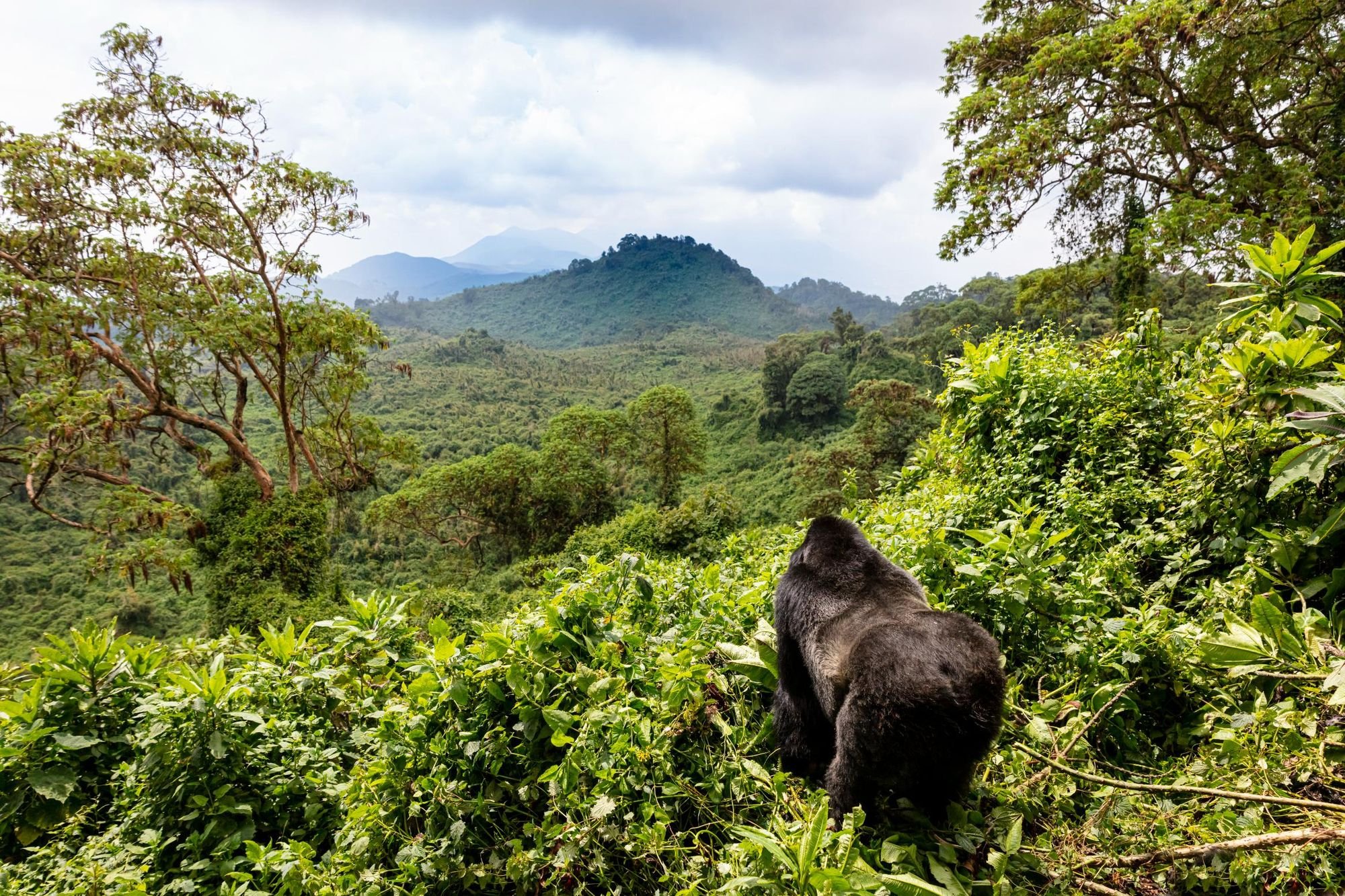
- Perfect for: Primate lovers
- Country: Rwanda
- Level: Moderate
- Duration: 1 day
Volcanoes National Park is a 100 mile (160 square km) park in the north of Rwanda. It's part of the great Virunga volcano conservation region - and home to some truly remarkable animals.
More famous than any other apes are the mountain gorillas which you can visit in the country.
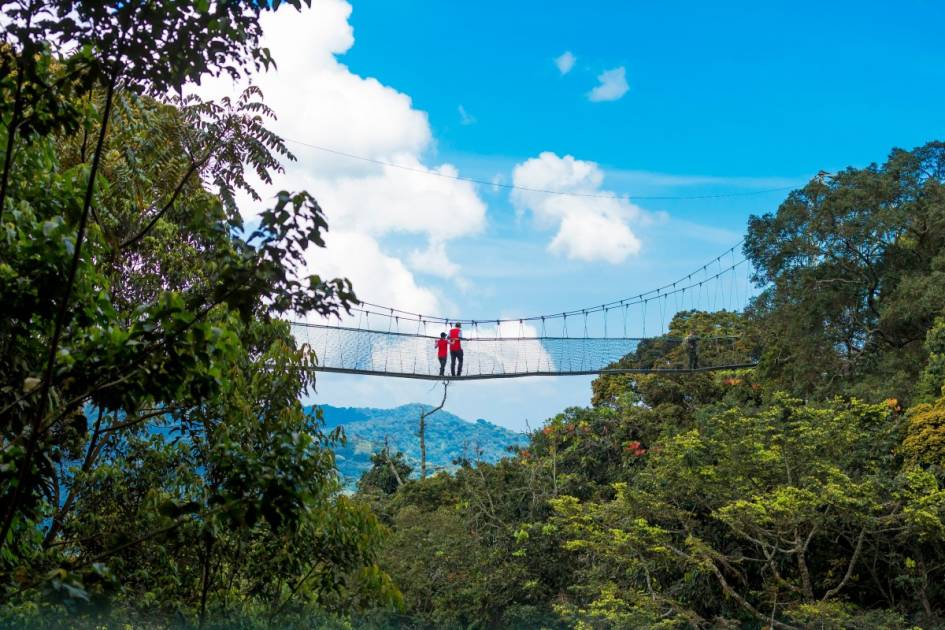
The permit fee to do so is high (US $1500 per person per day at the time of writing), but it should be noted that this is part of an admirable program built around such visits, with the money benefitting conservation in the area and also being used to build local schools, health centres and roads. The experience of seeing one of these mighty gorilla families up close is genuinely unforgettable too. There are currently 12 families living in the national park.
Only 96 permits are available each day in Rwanda, so it’s imperative to book in advance. These hikes can last 40 minutes or four to five hours, depending on your fitness level, location and where your local guide decides to take you (which will be based on how fit your group is).
If you’d rather save your cash, the Volcanoes National Park is still well worth a visit. Hike through the forests and spend an hour with a troop of golden monkeys, leaping from tree to tree.
12. Climb Pic Boby (2,658m) in Madagascar
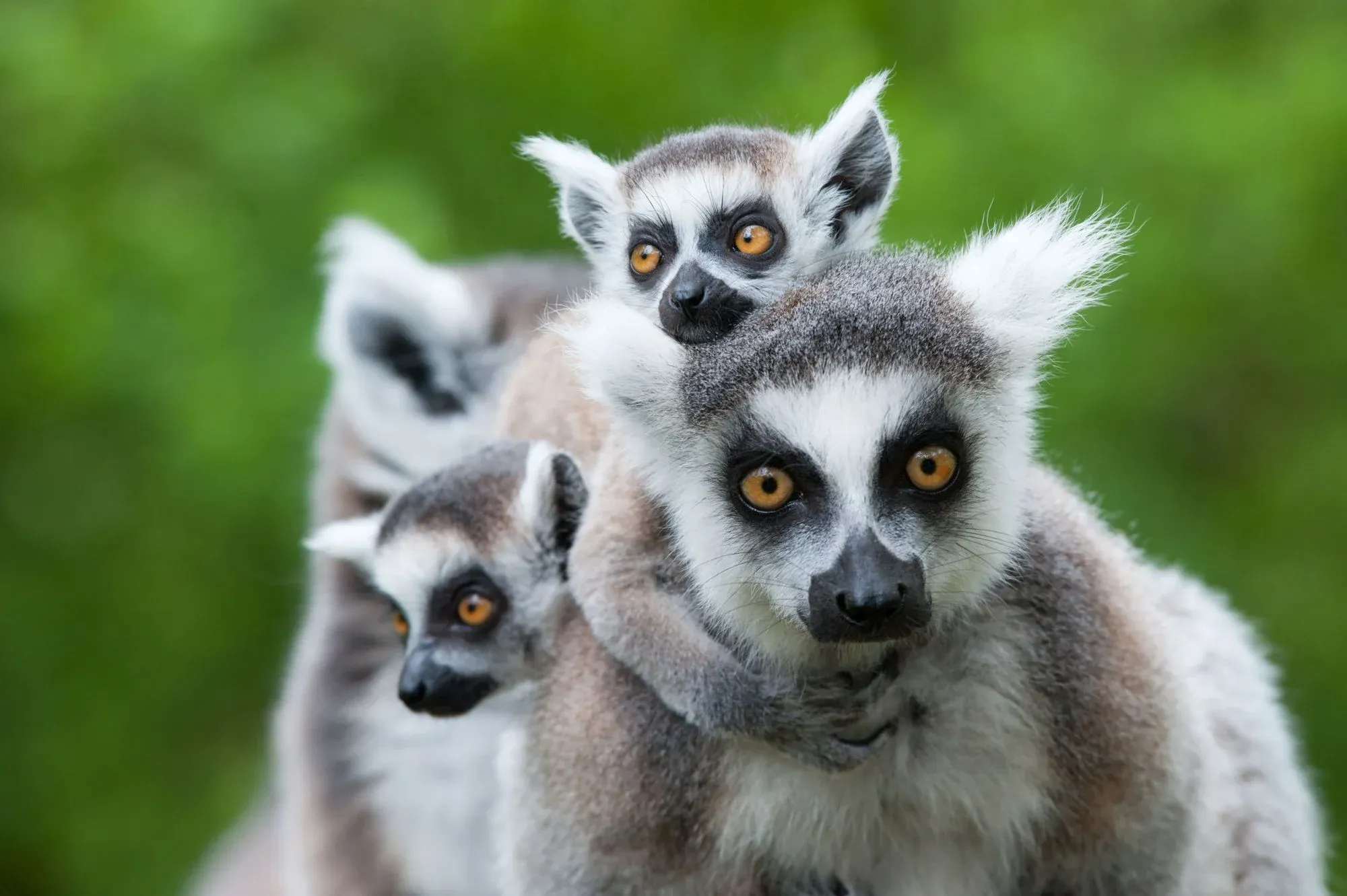
- Perfect for: Lemur lovers
- Country: Madagascar
- Level: Challenging
- Duration: 1 day
Madagascar is renowned for one thing beyond all others - its population of lemurs. There are over 110 species of lemur, and all of them - small or tall, cuddly or lanky - live on this legendary island, off the southeastern coast of Africa. There are plenty of spots where you can see lemurs, not least Anja, a community-run nature hub home to Madagascar's highest concentration of ring-tailed lemurs, but this a big island - and there’s also some serious mountains to climb too.
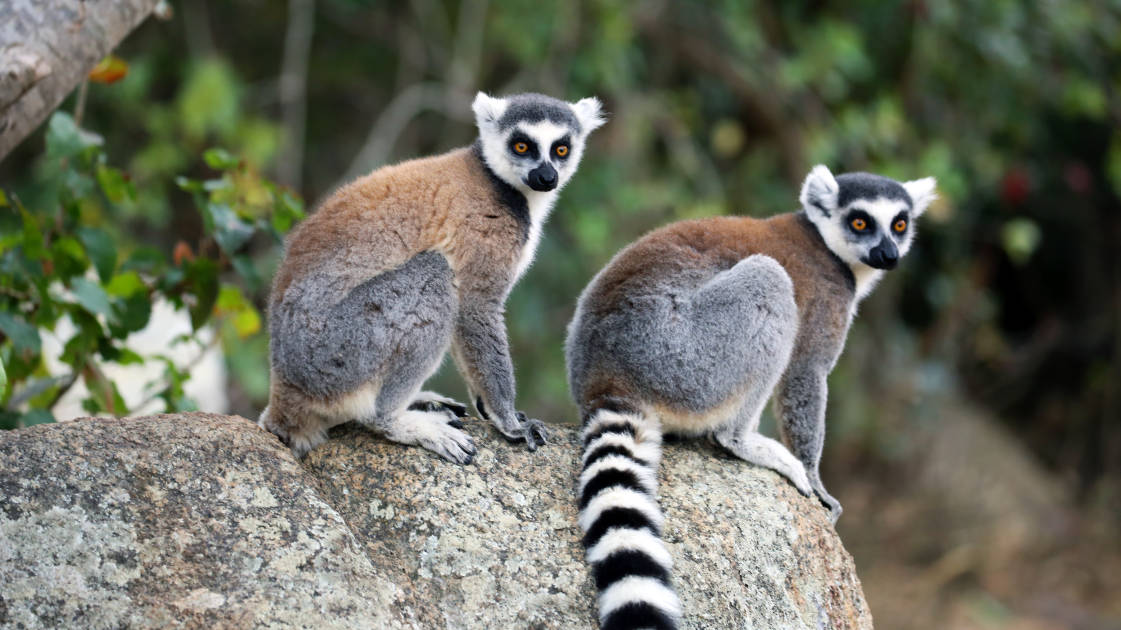
In this entry, we’re taking you to Andringitra National Park, 29 miles (47km) south of the capital of Ambalavao. Not only do 13 species of lemur live in this park, but it’s also home to Pic Boby, the second highest mountain in Madagascar, and perhaps the finest to climb.
You’ll begin the route by hiking through the Andohariana plateau, which leads you out to huge granite cliffs which mark the beginning of the ascent. After two and half hours of steady hiking and scrambling, you'll reach the summit - enjoying a full panorama of the surrounding area.
Read more: Inside Anja, the Community Reserve Where Lemurs Thrive
13. Chimpanzee Trekking in the Mahale Mountains
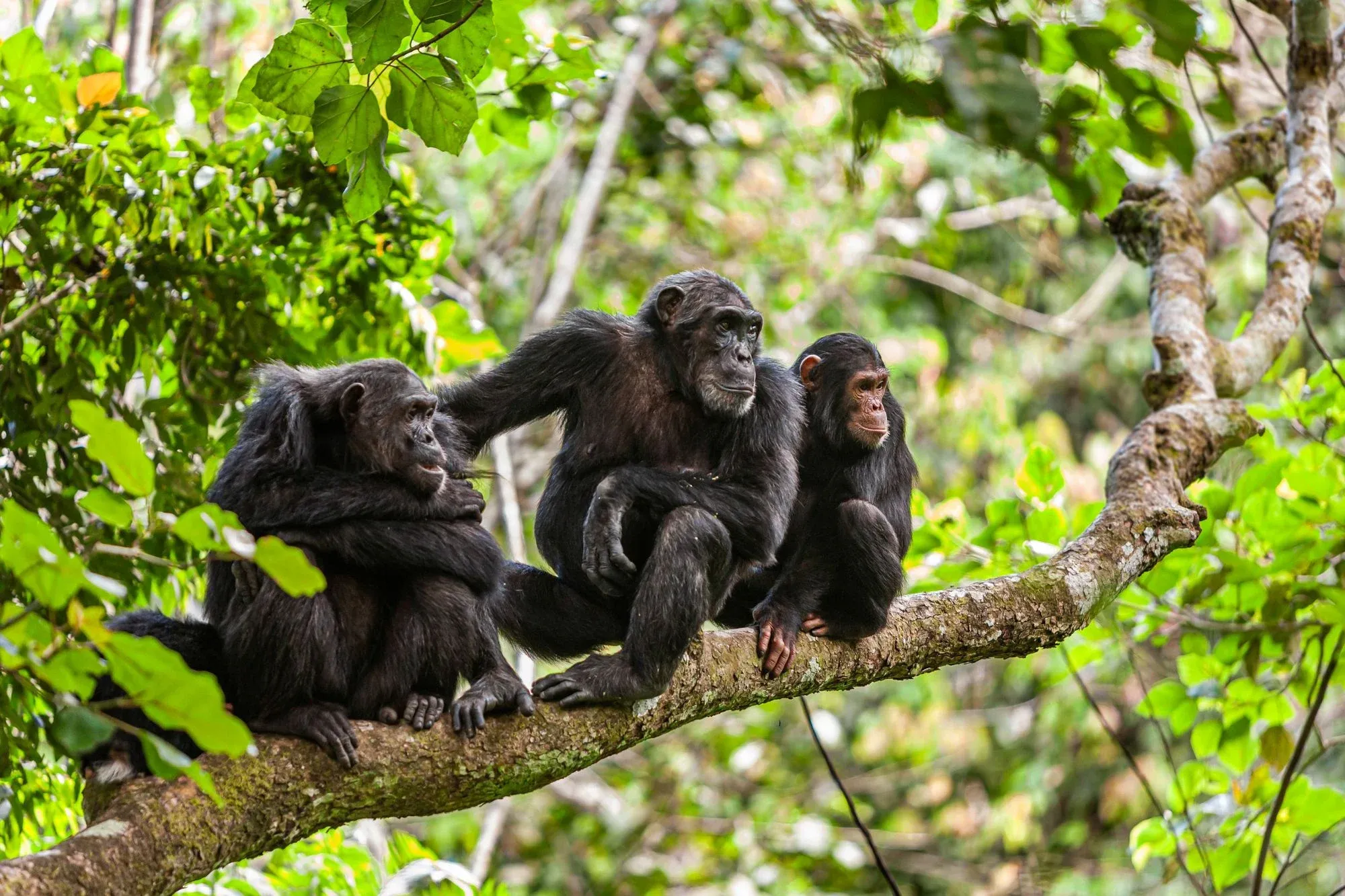
- Perfect for: Chimp spotting
- Country: Tanzania
- Level: Challenging
- Duration: 1 day
The Mahale Mountains National Park is where you’ll find the largest known population of eastern chimpanzees in the world. Writing in his 2005 book On Safari, safari expert David Anderson describes Mahale as “an evolutionary triumph, where the clock seems to have stopped early, at the right time.” He adds “It is a destination for the real adventurer."
This park is near Gombe Stream National Park - famed for its connection to Jane Goodall - but it is less visited. This is one of the few places in the world where lions and chimpanzees co-exist. Explore these beautiful forests with a guide and you have a great chance of spotting the chimps - swinging tree to tree high in the mountains or snoozing around. There are limits to how long humans can spend with these chimps, for various conservation reasons, but the experience of seeing a family is truly special. Most of the hiking in the Mahale Mountains is centred on this, but for a further challenge, you can also look at Mount Nkungwe (2,462m).
This national park can only be reached by air or by water. We’d recommend the latter - and in particular, kayaking in from Korongwe or Karema, for the ultimate adventurous experience.
Read more: A Guide to the Mahale Mountains in Tanzania
14. Climb Mount Kenya via Chogoria (4,985m)
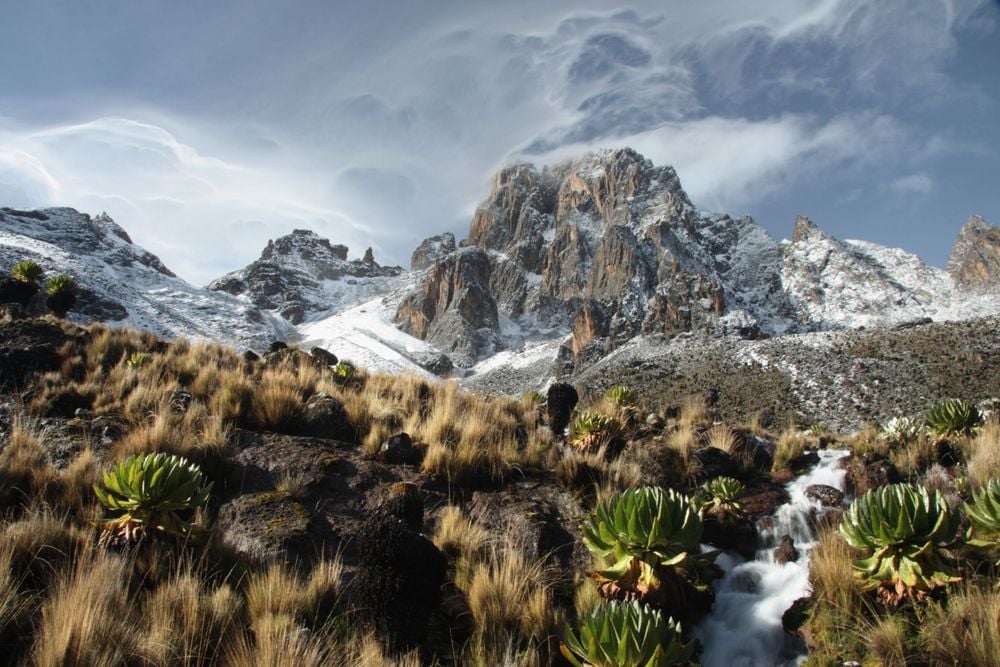
- Perfect for: The ultimate Kenyan adventure
- Country: Kenya
- Level: Challenging
- Duration: 5 day
Climbing Mount Kenya is in someways a mountaineering pursuit. We say that because the two highest peaks on the mountain, Batian, at 5,199m and Nelion at 5,188m, can actually only be reached with mountaineering equipment. However, there is a way to trek to one of Mount Kenya’s peaks - taking a long, and still very demanding, hike up to what is known as Point Lenana at 4,985m.
The quickest route to Point Lenana is the route with Naro Moru, but this isn’t the most scenic route. In our view, that’s the Chogoria Route. It has no huts along the way, so climbers have to be entirely self-sufficient, but in return you get a remarkable route, passing tussock grass and moorland, taking in Lake Ellis at 3,390m, with panoramas of the spikes of Mount Kenya beyond, and looking out over the Gorges Valley. You’ll also camp above Lave Michaelson above 4,000m before reaching the high point. This is a great route, and one that also excites the guides.
Descend from Africa’s second highest mountains - then head out on safari to see the big five.
Read more: A Guide to Climbing Mount Kenya
15. Climb Sapitwa Peak (3,002m) from Thuchila in Malawi
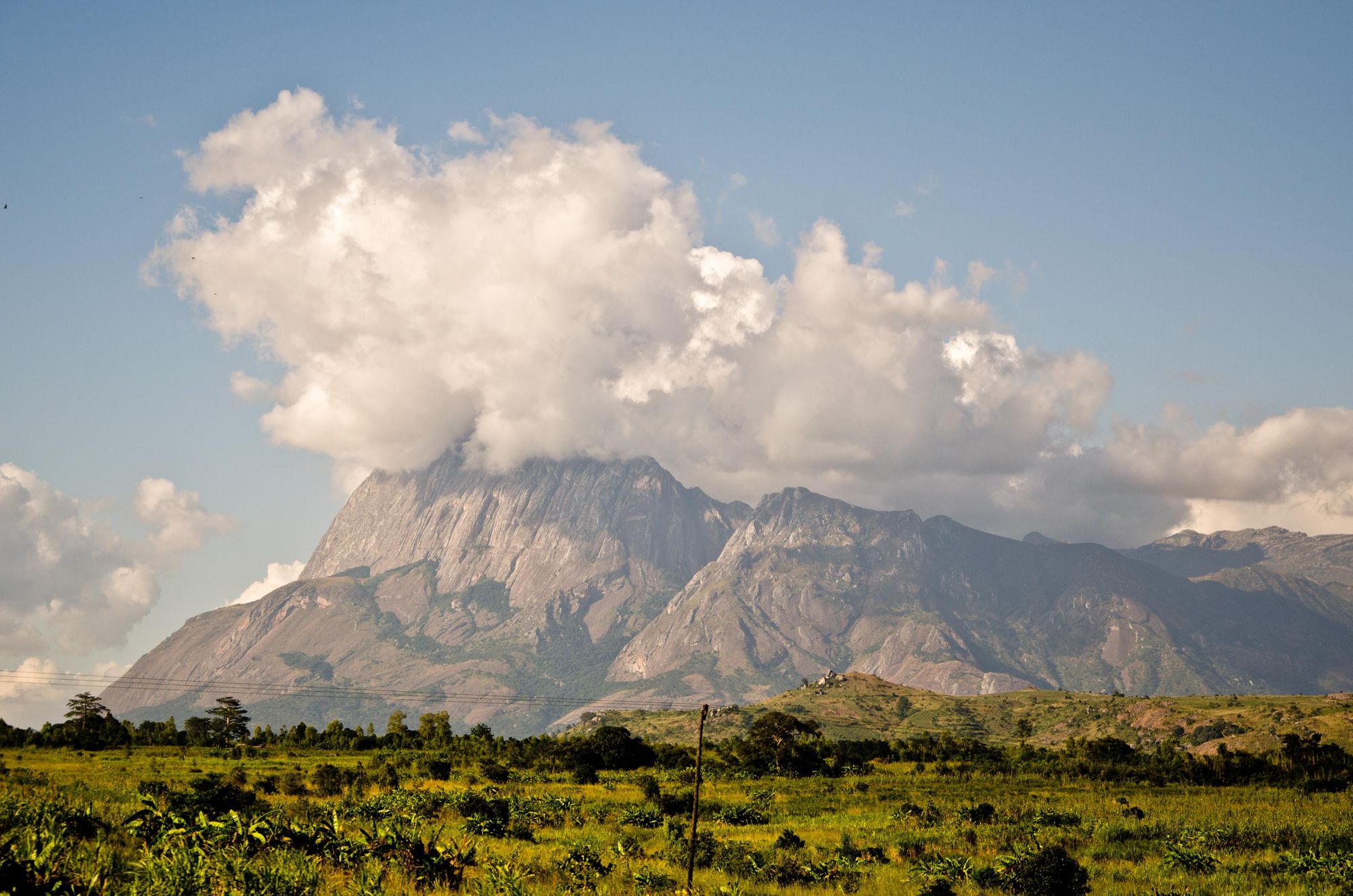
- Perfect for: A unique scramble
- Country: Malawi
- Level: Challenging
- Duration: 3 days
Mount Mulanje is a beautiful spot in Malawi, where huge, rugged peaks rise up to reach prominent heights, and provide fantastic views out over the surrounding fields and forests.
Sapitwa Peak is the highest point in Malawi, reaching 3,002m (with Mulanje itself actually have over 20 peaks, most of which average 2000m). The first day will take you up something called the Suicide Path. Fear not - it’s actually quite a slow and steady ascent route, though it does become a steep scramble close to its end. You’ll cross the Thuchila river and climb through the valley to get to Chisepo Hut, where you spend the night. It’s from here that you rise early the next morning and begin the long route to the top. You climb through bush and boulders to steep rock slabs which bring you to the ridgeline of Sapitwa. From here, you’ve got around a mile of clambering over boulders and wilderness - a really unique route - to the summit of Malawi. You’ll stay in Chisepo Hut again then descend, after a really demanding day in the mountains.
What’s great about this area in general is that there’s actually a variety of routes around the nearby villages though, from those who want lower walks to these more demanding climbs.
16. Go Trekking in the Simien Mountains in Ethiopia
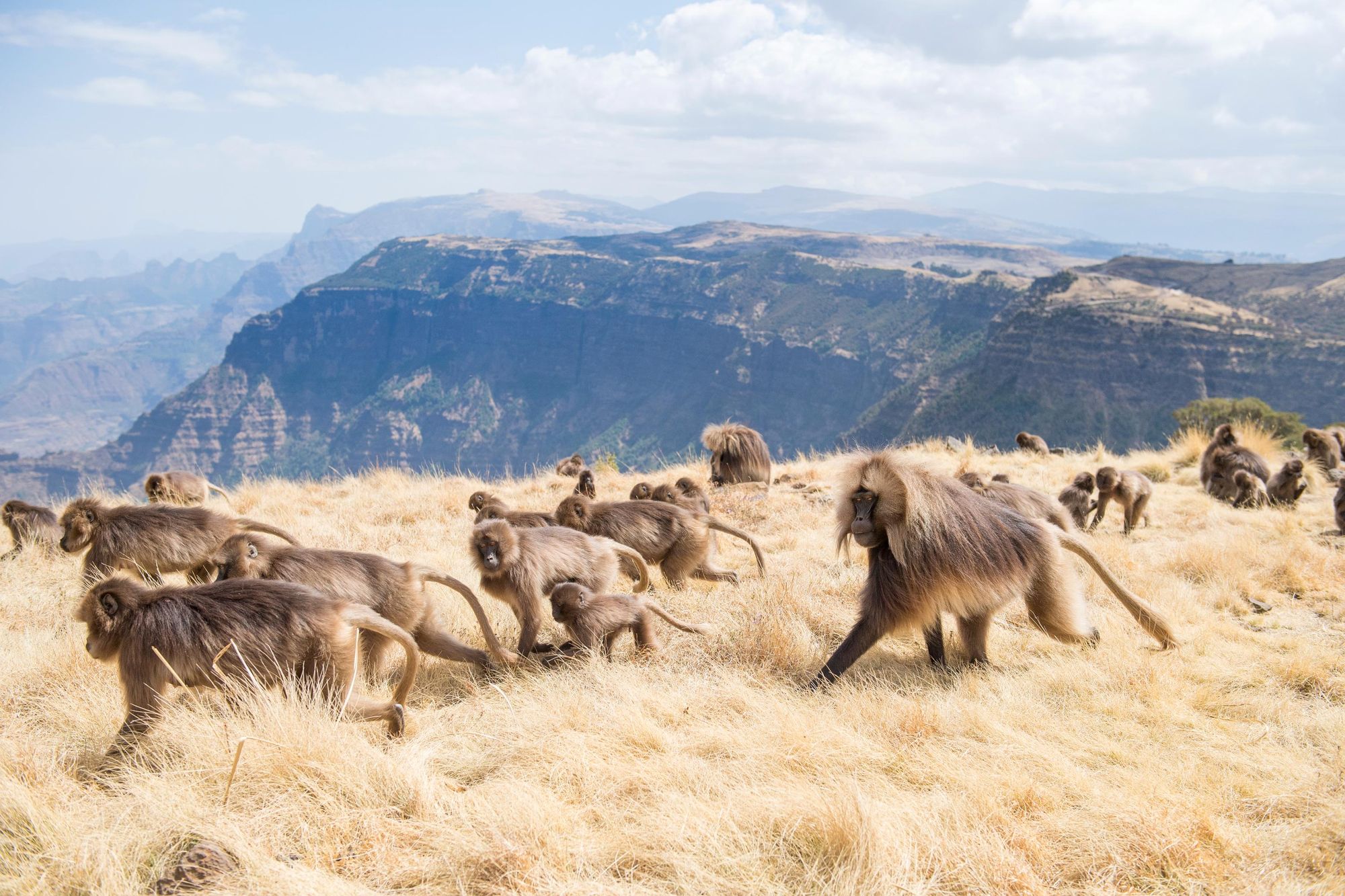
- Perfect for: Spotting gelada monkeys
- Country: Ethiopia
- Level: Challenging
- Duration: 3 day
The Simien Mountains to the north of Ethiopia are well known for their trekking. The Simien National Park sits within the range, and was formed in 1969 to protect the wildlife, which ranges from rare Ethiopian wolves and klipspringers to walia ibex and more common gelada monkeys.
The highest peak in the park, and indeed in Ethiopia, is Ras Dashen, which sits at a lofty height of 4,550m. It’s an interesting peak, in that while it can accumulate snow in the night, this will usually melt away within a few hours due to the heat of the sun during the day. Still, if you’re in rainy season, that snow can hang around up there.
Interestingly, many visitors to the Simien Mountains who climb Ras Dashen will tell you that the most enjoyable part of the walk is actually the route to get there. As such, we’d recommend a three-day walk around the national park, taking in the grassland, forest and escarpments with far-reaching views out over deep valleys, and with great potential for wildlife. Visit the Jinbar Falls viewpoint, where a waterfall plunges and the views are long, and hike to Imet Gogo (3,925m) and even Ras Bwahit (4,430m), which is the second highest peak in the country.
17. Climb Lion’s Head in South Africa
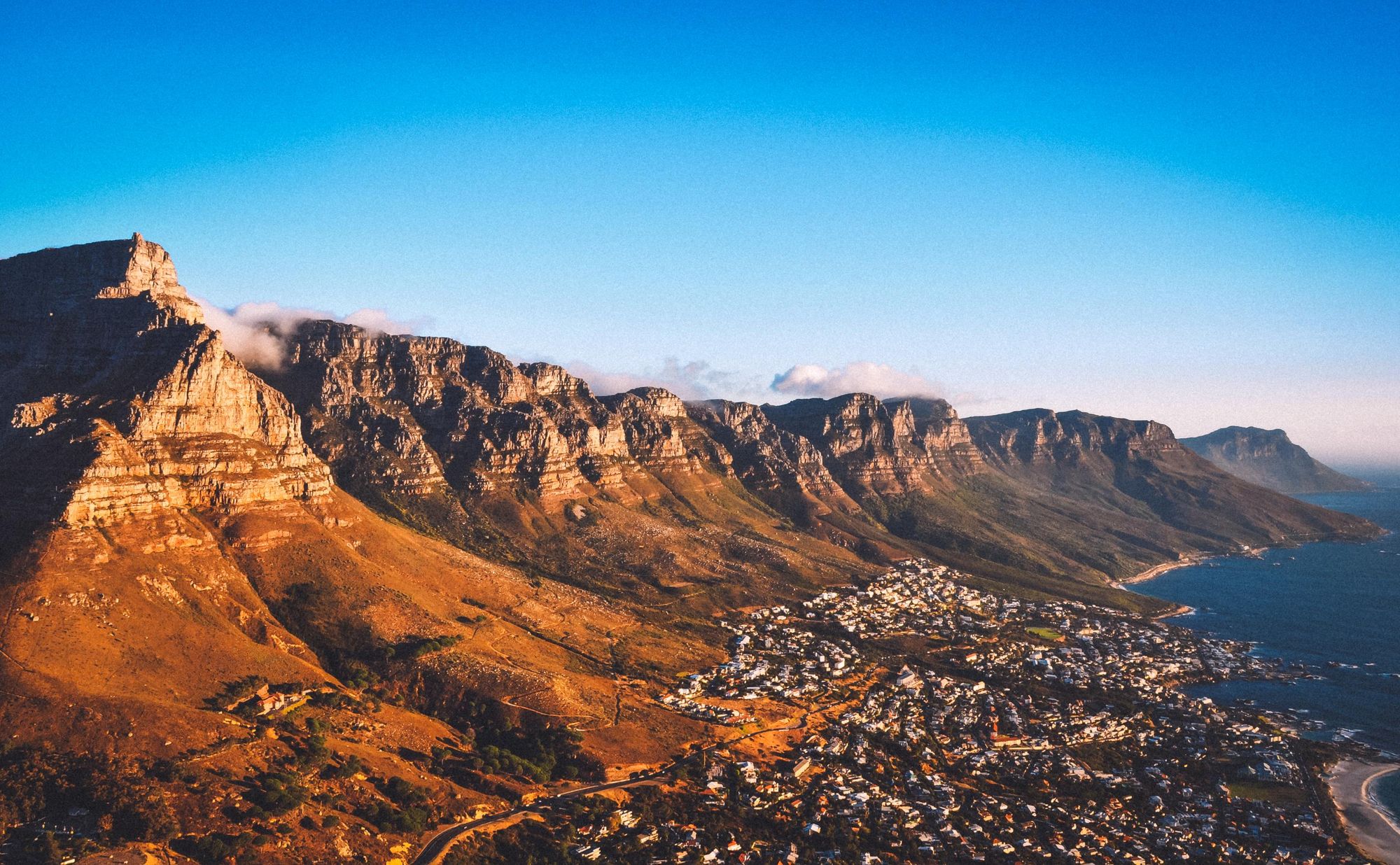
- Perfect for: A scenic day out in Cape Town
- Country: South Africa
- Level: Manageable
- Duration: 2-4 hours
Cape Town is famed for its surroundings - the sprawling city set amongst mountains and ocean - and on a hike up Lion’s Head, in the midst of it all, you can get great views out over all of it.
Starting from the car park, you simply follow the well beaten trail, climbing on a dirt track. You’ll soon come to steps, and things continue to get narrower and steeper until you come to some big boulders that you’ll have to navigate. There are ladders and chains in place to help you in places. Do be careful. From the top of the hill you can look out over Table Mountain, Signal Point, the Twelve Apostles, back down to Cape Town and the far-stretching ocean.
This is likely to be the busiest climb on this list, but that’s because you get a whole lot of reward for a climb which is actually relatively quick - close to one of the great cities of the world.
18. Take the Nyiragongo Volcano Trek in Virunga
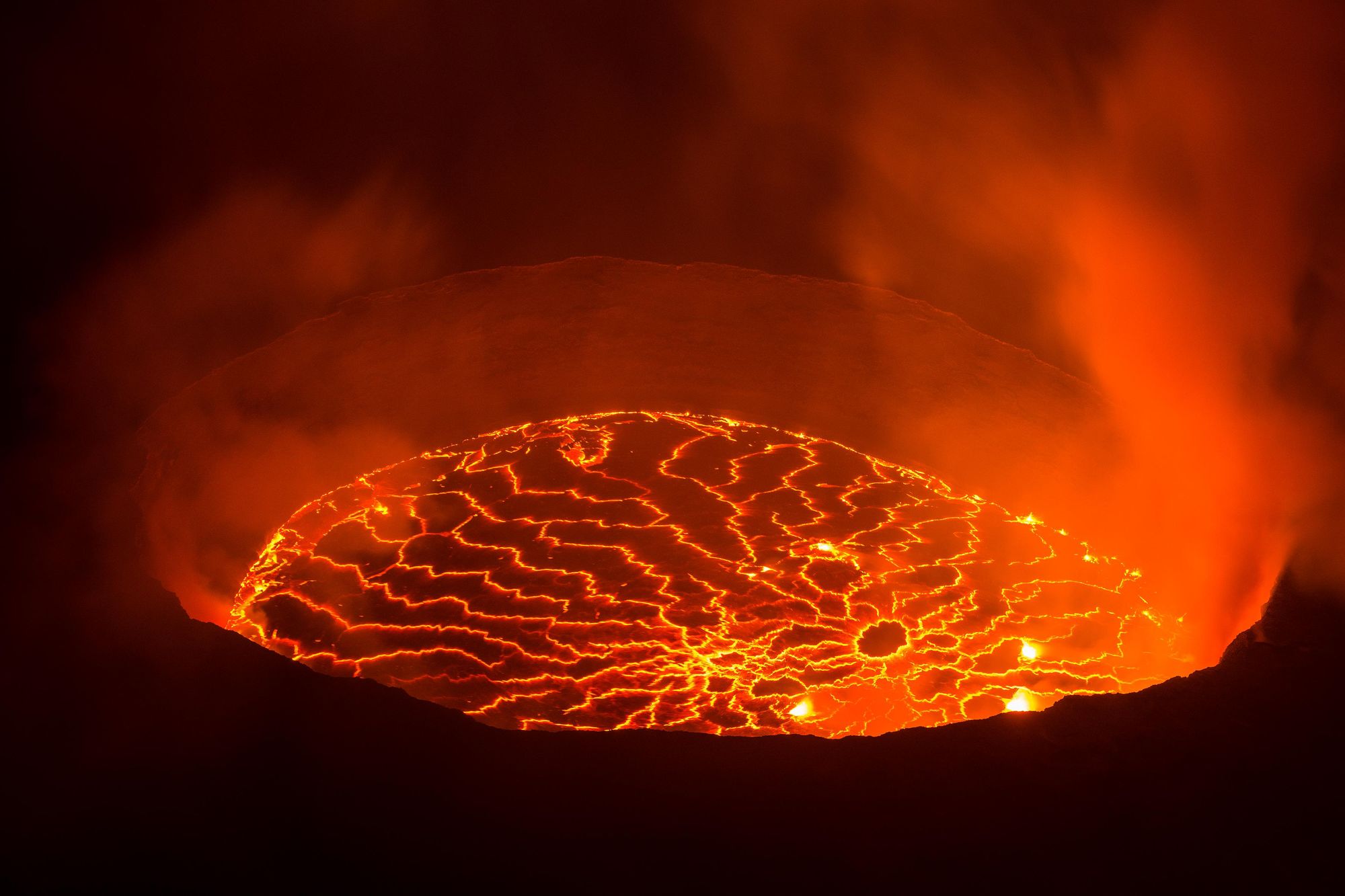
- Perfect for: Volcano lovers
- Country: Democratic Republic of the Congo
- Level: Challenging
- Duration: 1 day
Perhaps the most unique hike in all of Africa is the trek up the Nyiragongo volcano. The route, which is four miles (6.5km) is typically divided into five sections, with a 15-minute breather taken at each. Starting at the Kibati Ranger Post at 1870m, you’ll be ascending to the summit at 3,470m, first trekking through forests rich with wildlife (and, in particular, busy with monkeys), then arriving out to a more open landscape with excellent valley views. Section three takes you across old lava flows and volcanic fissures, as the landscape really comes to life, and as you enter the fourth section, you’ll be walking through high mountain forest. The final section of the route is the ascent to the top of the mountain - a demanding 300m climb.
The view from the top? The world’s largest lava lake bubbling and burning away just below.
19. Take the Canopy Walkway in Kakum National Park
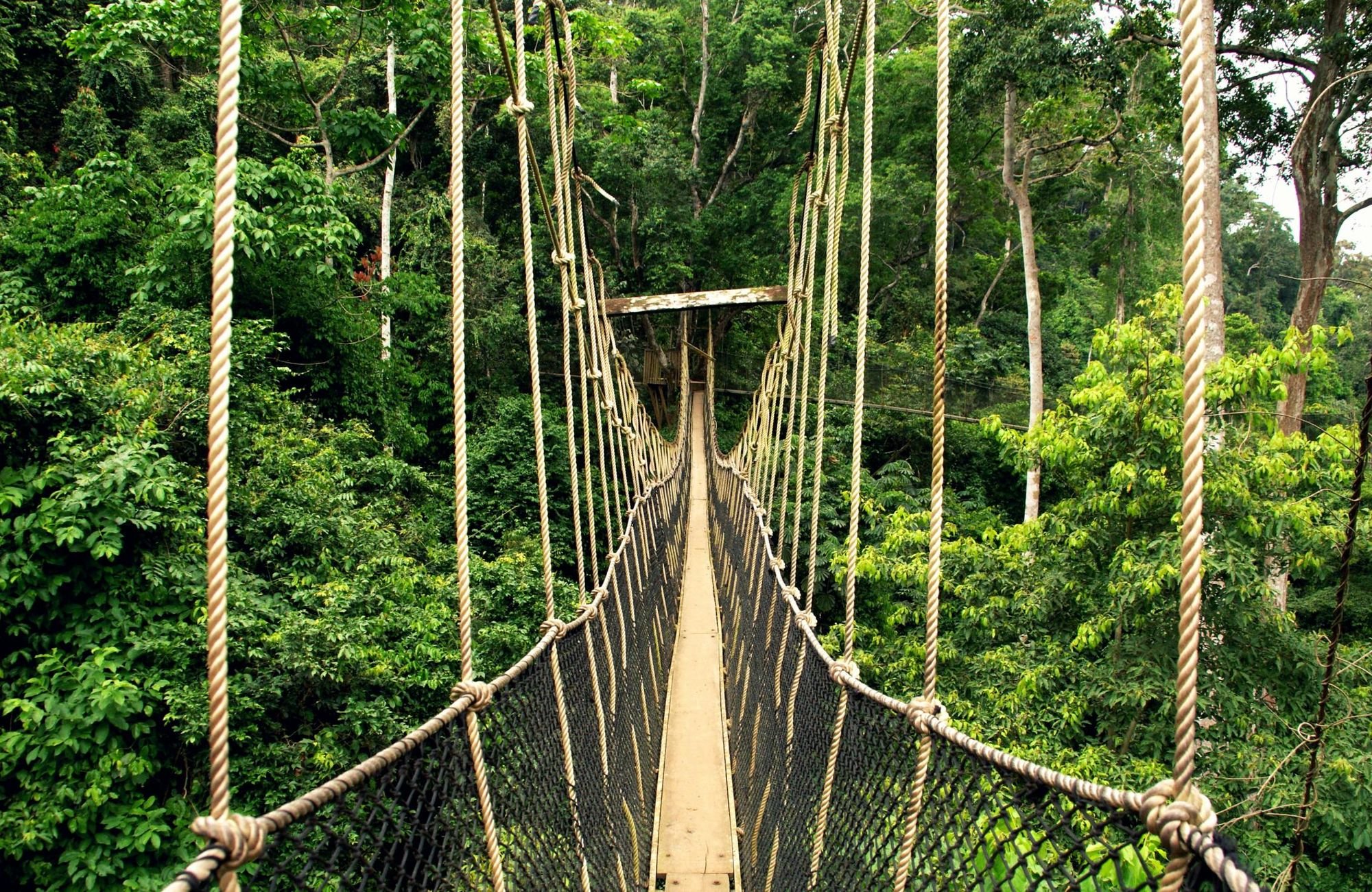
- Perfect for: A bird’s eye view
- Country: Ghana
- Level: Easy
- Duration: 1 day
This is one of Ghana’s most popular and developed areas for tourism, four hour’s drive from Accra, and it’s great for families. Kakum has only been a national park since 1992, but the area is lush with tropical forest. Endangered species range from the giant bongo antelope and North African crested porcupine to the Diana monkey and African elephant, and there’s great bird watching - including an amazing nine species of hornbill to be spotted, as well as grey parrots and over 600 types of butterfly. You can explore this on one of only three canopy walkways in Africa. This one reaches 350m long and connects seven tree tops.
One very notable thing about this park is that it was created by the local people - not the State Department of Wildlife - and so it has been set up by the local community, to benefit the local community, and to preserve the amazing nature and world-beating wildlife with whom they share a home. Extend your stay by booking into a treehouse and wake early for prime bird watching.
20. Climb the Mountains of the Moon in Uganda
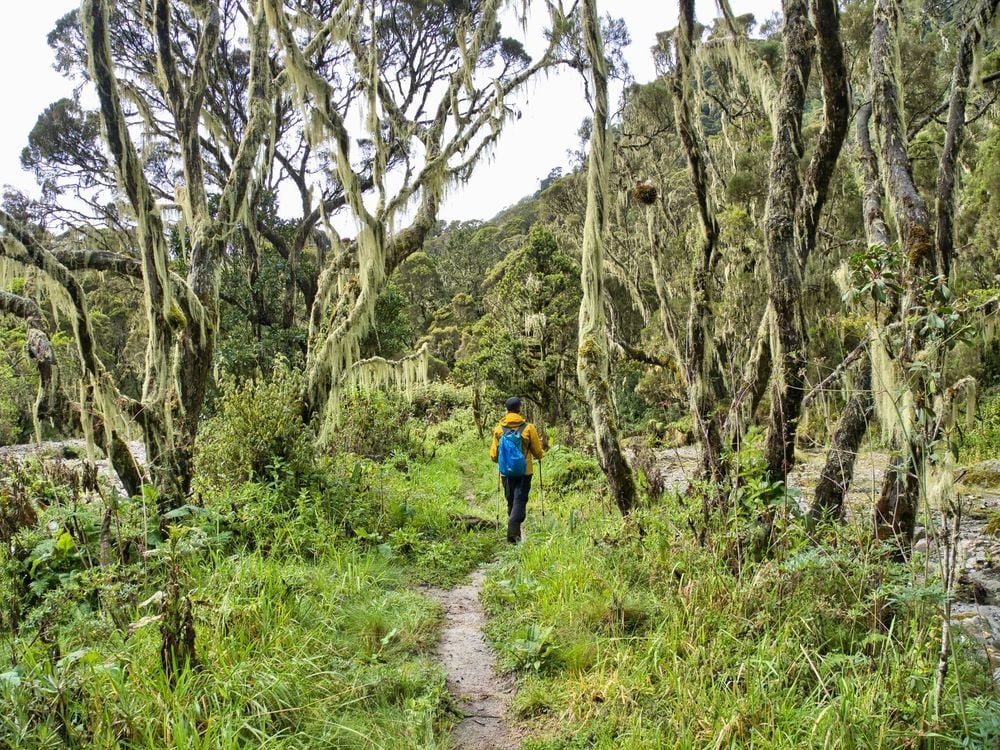
- Perfect for: A huge physical challenge
- Country: Uganda
- Level: Challenging
- Duration: 7 day
The Rwenzori Mountains in Uganda are little known, but they’re actually home to six of the highest mountains in all of Africa - including the third highest, Margherita Peak (at the summit of Mount Stanley), at 5,109m. The Rwenzori are known as the mountains of the moon, owing to the fact that the peaks of these mighty mountains are often snow-capped. If you’re a climber, this is the place to be in East Africa - most high routes here require technical equipment.
This route starts in farmland, and takes you to some sublime mountain huts on your way up to the roof of Uganda. You’ll stop at the Nyabitaba Hut at 2,651m and hopefully see chimpanzees and black and white colobus monkeys. Climb on to the John Matte Hut (3,505m) and get your first sight of Mount Stanley and Mount Speke, then it’s on to the Bujuku Hut at 3,962m, via the isolated Bujuku Lake in the remote Stuhlmann Pass, sandwiched between two tall-rising peaks.
The terrain transforms from grass to rock as you ascend above 4000m to Elena Hut (4,541m) on Mount Stanley, where you’ll stay before reaching Margherita Peak. From here, it’s ice axe and crampons up to the top, traversing the Stanley Plateau to earn views out over Uganda.
Inspired? Browse our adventure holidays in Africa now!

